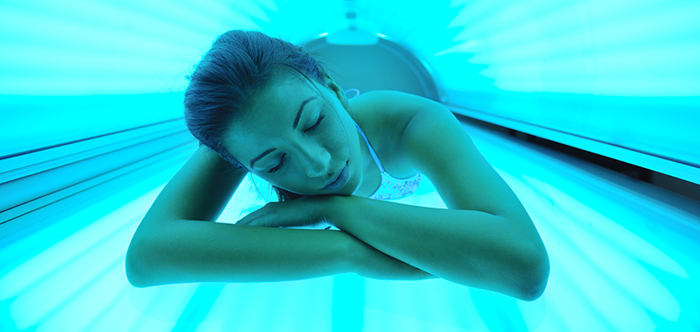Solarium Tan’s the Safe and Health Way
Nothing can make us happier throughout the year than having a sun-kissed tan. Solariums, also known as sun beds or tanning booths, are a good way to achieve an amazing tan in a short time. Solarium tanning involves lying in an enclosure which surrounds you with ultraviolet light. It is the UV light that causes the skin to tan. Some experts recommend exposure to a certain amount of UV for therapeutic purposes and for skin conditions such as acne, for example. A solarium is a device emitting ultraviolet rays used to produce a cosmetic tan. They emit a UV ray that is somewhat similar to sunlight. The user lies down on a UV bed, or stands in front of a panel over their skin.
IS INDOOR TANNING THE SAME AS TANNING OUTSIDE IN THE SUN?
When you tan at an indoor tanning facility, your skin produces a tan the same way it does when you lay out in the sun: through ultraviolet (UV) light. There is one important difference, though. When you are out in the sun, you cannot control the amount of UV light you are exposed to, because it is affected by changes in the atmosphere. Indoor tanning is one way to regulate the amount of UV light you are exposed to, because it is a controlled environment. You can gradually increase your exposure time to make sure you don’t get sunburn, which is harmful to the skin. Recent studies have shown that solarium tanning is less damaging than sun tanning, although absolutely safe sunbathing doesn’t exist. Solariums are appropriate for every skin type except those with hypersensitive skin. The proportion between the UVA and UVB rays is balanced, which reduces the risk of damage to a minimum. The maximum exposure time is usually from 5 to 20 minutes. The buttons inside the cabin allow you to adjust the power, to control the ventilators and even to listen to your favorite music.
HOW OFTEN SHOULD I TAN?
Tanning everyday is not recommended. You should only expose yourself to ultraviolet light once every 48 hours to limit your chances of overexposure. Your skin needs time to recuperate and rejuvenate itself in between tanning sessions. Specialists recommend tanning 5-7 minutes per week. This will protect you against skin cancer and cell damage.
BENEFITS AND RISKS OF THE SOLARIUM TAN
There are also some benefits and risks to solarium tanning. First of all, exposure to UV light leads to production of vitamin D in the skin. Vitamin D plays an important role in the maintenance of several organ systems. However, its major role is to increase the flow of calcium into the bloodstream by promoting absorption of calcium and phosphorus from food in the intestines, and reabsorption of calcium in the kidneys; it enables normal mineralization of bone and prevents hypocalcemic tetany. It is also necessary for bone growth and bone remodeling by osteoblasts and osteoclasts. Without sufficient vitamin D, bones can become thin, brittle, or misshapen. Deficiency can arise from inadequate intake coupled with inadequate sunlight exposure. After solarium tanning your skin cannot burn. Solarium creates a specific amount of UV over a given time period, and speeds up the process of skin getting brown. There are also risks of the solarium tan. Tanning can increase the risk of skin cancer. It also may cause premature ageing, because UVA rays destroy the collagen and connective tissue beneath the layers of the skin. If you don’t wear special sun defensive goggles during tanning, you can damage your eyes. If your tanning program is very intensive it may cause pigmentation processes.
NOTE! Solarium tanning isn’t recommended for people under 16. Always wear protective goggles when using a solarium; the eye’s cornea and the conjunctive may become easily inflamed. Try not to use perfumes or deodorant before a solarium. Use professional solarium cosmetics. It will save your skin from damaging. Never stay in a solarium for more than 20 minutes. Never visit a solarium twice a day. Protect your hair and sensitive parts of your body when using a solarium. Use special applicators for breasts, and lip balm for lips. Don’t forget to exfoliate your body before solarium tanning. Don’t use a solarium if you are pregnant or breast feeding.

